Hello! I’m Mark Olsen. Welcome to another edition of your regular field guide to a world of Only Good Movies.
The new “Superman” is in theaters this weekend, written and directed by James Gunn and starring David Corenswet in the title role, with Rachel Brosnahan as Lois Lane and Nicholas Hoult as villain Lex Luthor. This film is seen as the first salvo of a relaunch of the DC Universe of characters for Warner Bros. and so there is more riding on it than just the outcome of this one film. There are several new characters introduced in the film, perhaps intended to topline future titles of their own.
Samantha Masunaga got into the history of the Superman character onscreen and took a look at what this might mean for DC’s future.
“DC has been playing catch-up with Marvel,” said Arlen Schumer, a comic book and pop culture historian. “They’ve given James Gunn the keys to the DC kingdom and said, ‘You’ve got to restore Superman. He’s our greatest icon, but nobody knows what to do with him. We think you know what to do with him.’”
David Corenswet as Superman and Rachel Brosnahan as Lois Lane in DC Studios’ and Warner Bros. Pictures’ “Superman.”
(Warner Bros Entertainment)
The film has an impulsive sincerity that can be endearing. As Amy Nicholson wrote in her review, “Fine, I’ll say it. I need Superman. I’m craving a hero who stands for truth and justice whether he’s rescuing cats or reporting the news. Cheering for such idealism used to feel corny; all the cool, caped crusaders had ethical kinks. Even his recent movies have seemed a little embarrassed by the guy, scuffing him up with cynicism. I’m with the latest incarnation of Superman (David Corenswet) when he tells Lois Lane (Rachel Brosnahan) that having a big heart is ‘the real punk rock.’”
Amy added, “This isn’t quite the heart-soaring ‘Superman’ I wanted. But these adventures wise him up enough that I’m curious to explore where the saga takes him next. Still, I left chewing over how comic book movies can be so popular and prescient, and yet people who’ve grown up rooting against characters like Lex Luthor cheer them on in the real world. Maybe Gunn can answer that in a sequel. Or maybe our stubborn myopia is what this Superman means when he says, ‘I screw up all the time but that is being human.’”
‘Drive’ in 35mm
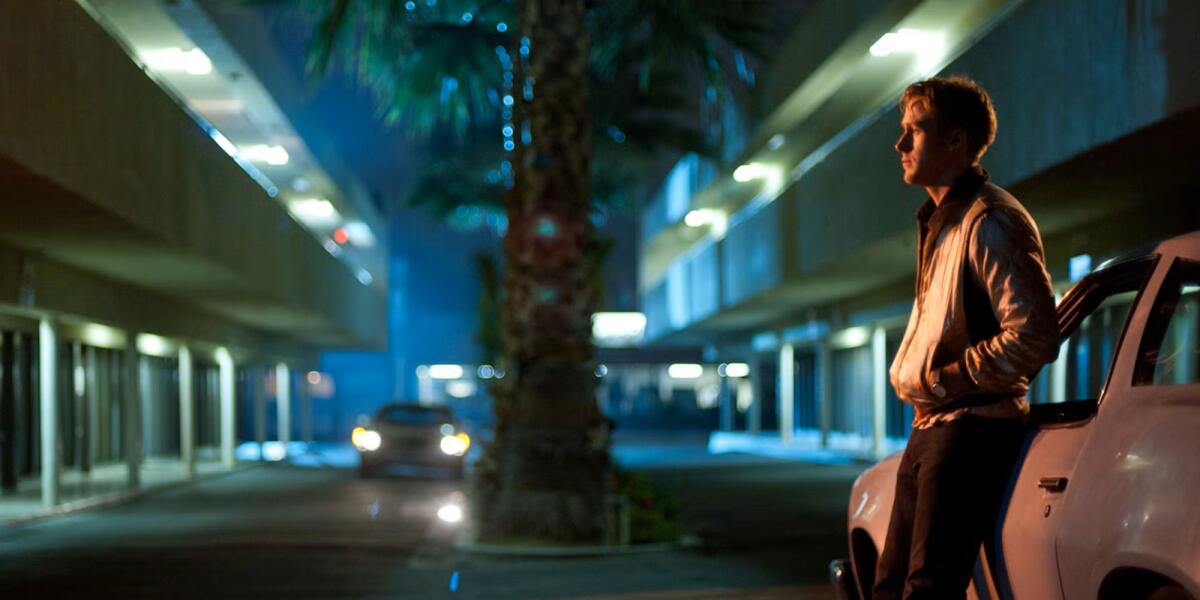
Ryan Gosling in “Drive.”
(Academy Museum)
On Saturday the Academy Museum will show Nicolas Winding Refn’s 2011 romantic thriller “Drive” in 35mm. Composer Cliff Martinez will be there in person. The film is showing as part of the series “Bathed in Light: Saturated Colors in Cinema,” which will also see screenings of Michael Mann’s “Thief,” Walter Hill’s “Streets of Fire” in 70mm (with the director in person), Harmony Korine’s “Spring Breakers,” Barry Jenkins’ “Moonlight,” Pablo Larraín’s “Ema,” Gaspar Noé’s “Enter the Void,” Hype Williams’ “Belly” and more.
A Los Angeles getaway driver, known only as Driver (played with taciturn cool by Ryan Gosling), falls for his neighbor (Carey Mulligan) and soon becomes involved in a caper trying to help out her ex-con husband (Oscar Isaac) that sets him afoul of a local crime boss (Albert Brooks).
“Drive” won the directing prize when it premiered at the 2011 Cannes Film Festival and became something of a cultural sensation at the time of its release, thanks in part to the hypnotic use of dreamy synthesizer music. (And remember Gosling’s scorpion jacket?)
In his original review of the film Kenneth Turan wrote, “‘Drive’ is a Los Angeles neo-noir, a neon-lit crime story made with lots of visual style. It’s a film in love with both traditional noir mythology and ultra-modern violence, a combination that is not ideal. … Impeccably shot by Newton Thomas Sigel, ‘Drive’ always looks dressed to kill. Making fine use of Los Angeles locations, particularly the lonely downtown streets around the L.A. River, ‘Drive’ has a slick, highly romanticized pastel look calculated to win friends and influence people.”
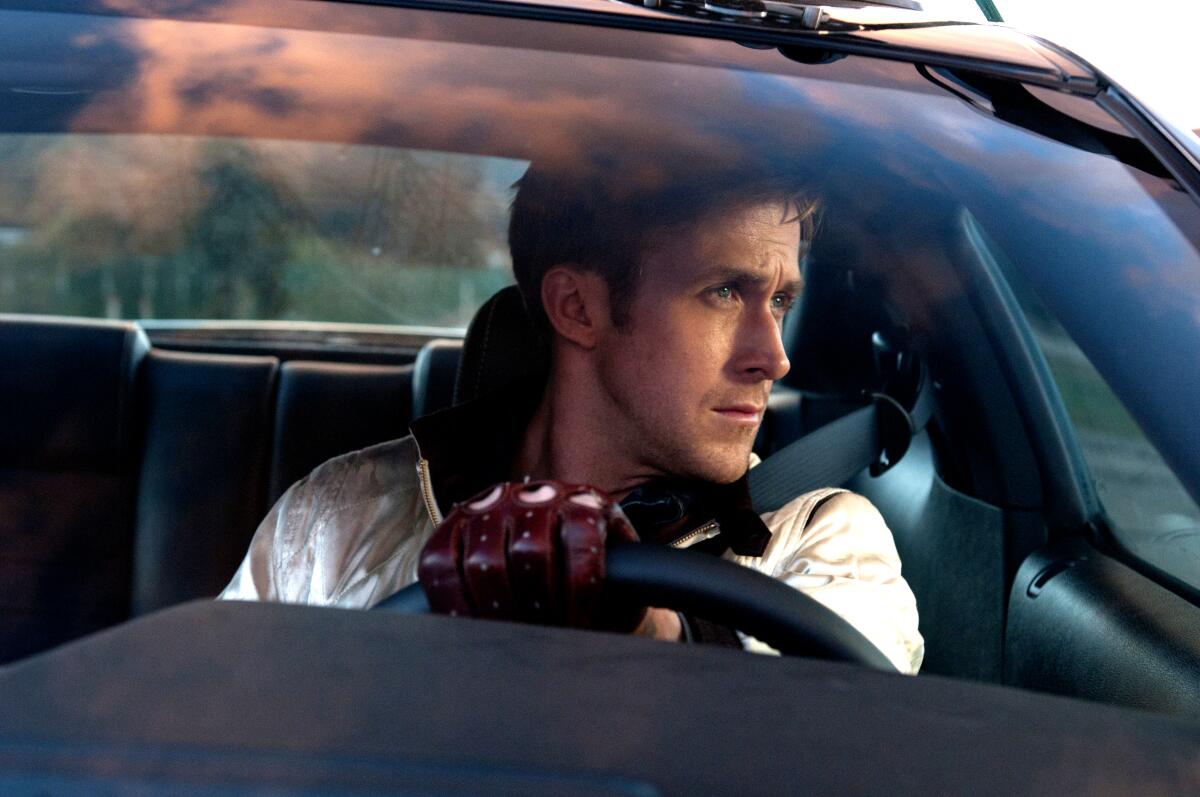
Ryan Gosling in “Drive.”
(FilmDistrict and Bold Films and OddLot Entertainment)
In an interview with Steven Zeitchik, Gosling and Refn discussed their collaboration and the long drives they would take together around the city.
“We would just drive for hours, talking and listening to music,” Gosling said. “And I would say, ‘This is what we want to capture in the movie, this feeling of being in a trance in a car with pop music playing.’”
For his part, Refn added, “I wanted to play with the classic notion of a fairy tale. Driver protects purity, and yet he can slay evil in the most vicious ways possible.”
Zeitchik and Julie Makinen also created a guide to some of the film’s Los Angeles locations, including MacArthur Park, the L.A. River and Point Magu.
Heather McAdams’ handmade films
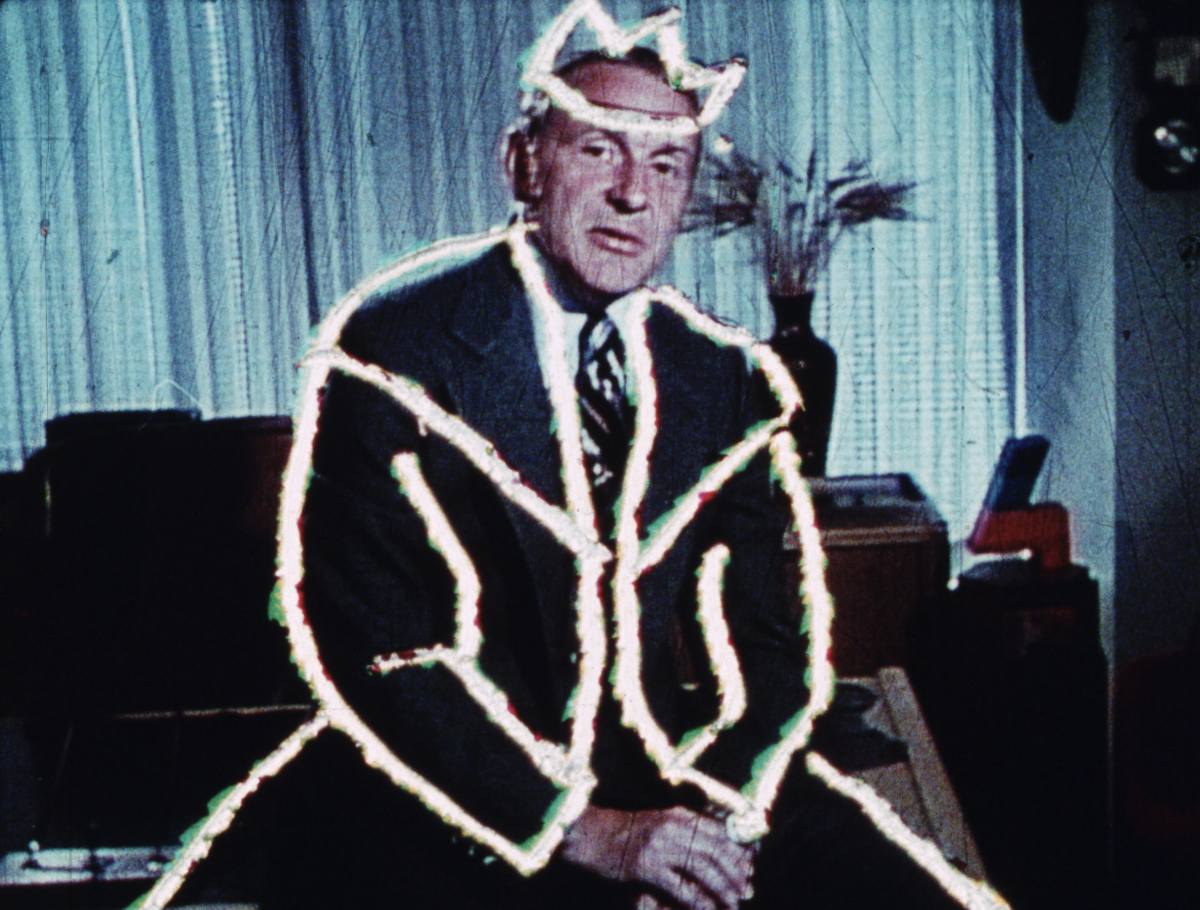
An image from Heather McAdams’ “Scratchman #2.”
(Heather McAdams)
This week will see two programs of work by the Chicago-based artist Heather McAdams, who, though primarily known as a cartoonist, has also been creating idiosyncratic, handmade films for decades. On Thursday at the Academy Museum will be a program titled “Kind of a Drag: Experimental Films, Documentaries and Scratch Animation by Heather McAdams, 1980-1995,” which will explore the range of McAdams’ filmmaking practice. An ongoing preservation project undertaken by the Chicago Film Society has spurred a revival of interest in her work.
“I spent a lot of time trying to make stuff happen,” said McAdams during a call this week from her home in Chicago. “I’ve always just been really doing a lot of different things, just doing stuff here at home and then all of a sudden the Chicago Film Society discovers this person that’s living up on the north side of Chicago. Those guys are really great and they’re very organized and they’ve got connections. I’ve gone to the Museum of Modern Art and the National Gallery of Art. You sit around all your life and you go, ‘Why doesn’t somebody call me up?’ And then the next thing when they call you up, you go, ‘Why are they calling me up?’”
Among the films to be shown will be 1980’s “The Scratchman” and 1982’s “Scratchman #2,” in which she scratched right onto the surface of found footage to create lively new images. “You” from 1983 uses Brian Eno’s song “King’s Lead Hat” as the background to a collage of footage. Among other titles showing are two documentary shorts, 1988’s “Meet … Bradley Harrison Picklesimer” and 1995’s “The Lester Film” (co-directed by her husband Chris Ligon), both unconventional portrait films. McAdams will be present for the event, joined by Picklesimer for a Q&A.
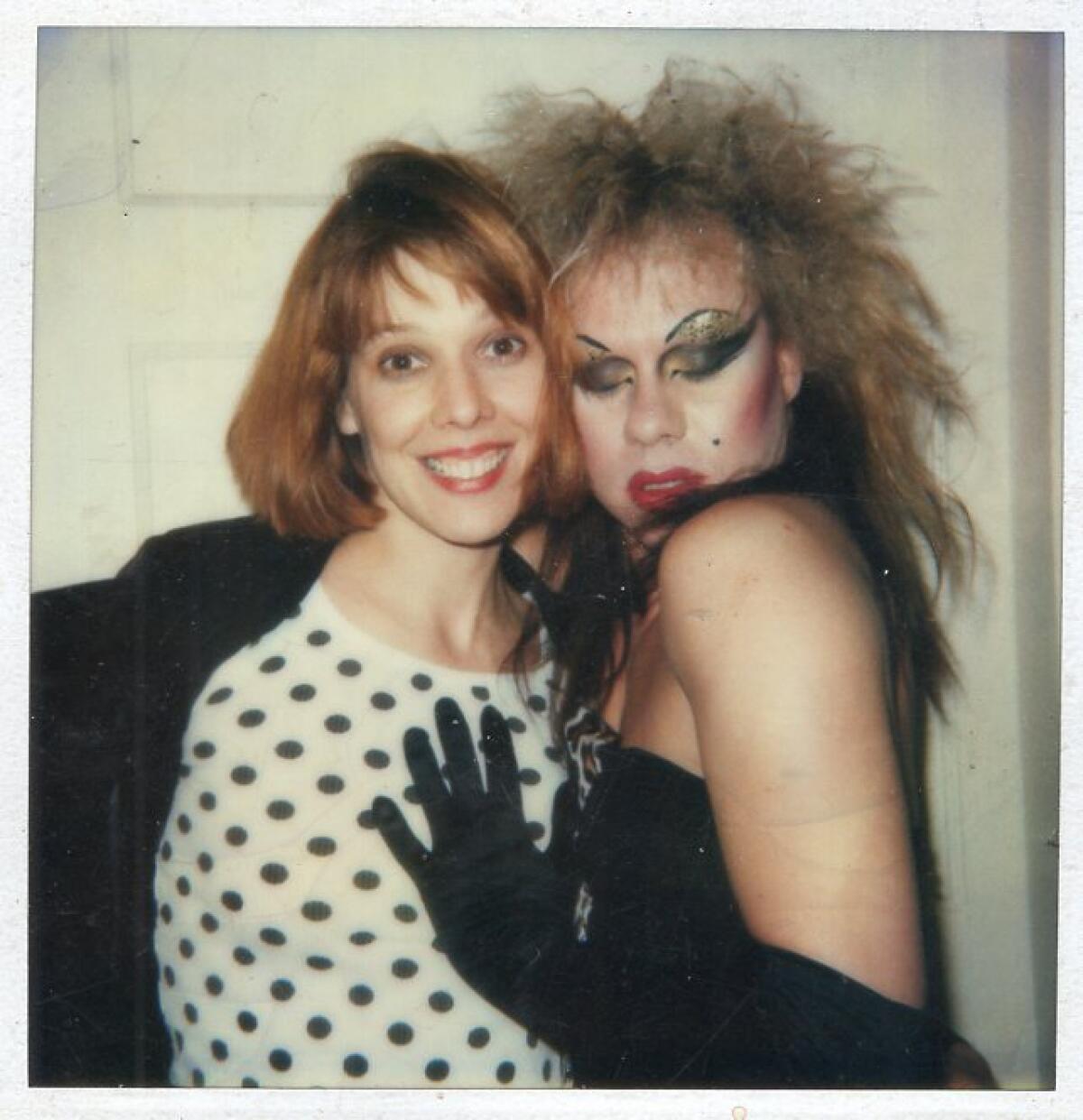
Filmmaker and artist Heather McAdams with Bradley Harrison Picklesimer, the subject of her 1988 film “Meet … Bradley Harrison Picklesimer” in a photo circa 1982.
(Heather McAdams)
“The couple of things that seem to relate to just about everything I do is working with my limitations, the kind of homemade, work-with-what-you-got type thing,” added McAdams. “I don’t see that necessarily as a complete negative, and that runs through my work. And the other thing is humor, I’m always trying to make myself laugh or make other people laugh, even though everything I do isn’t funny. Sometimes I just get weird and I go sideways and off the tracks or I make a comment about something that might be more spiritual or more important. Sometimes I make something that I go, ‘Oh, God, I wish I didn’t do that.’”
On Wednesday at 2220 Arts + Archives, Mezzanine and Los Angeles Filmforum will host McAdams and Ligon for what is being billed as “Chris & Heather’s Big Screen Blowout,” a screening drawn from their extensive collection of 16mm ephemera. The program will include trailers for films such as “Superchick” and “Trip With the Teacher,” TV performances by Ricky Nelson and Buffalo Springfield and commercials and more. The evening will also include five one-minute animated cartoons McAdams and Ligon made for MTV in the 1990s. The couple will be there for the event as well.
Of the “Blowout,” McAdams said, “It’s fun to just see how the audience reacts as it’s being projected. It’s hard to explain to people exactly what it is, unless they’re super hip and cool.” With a laugh she added, “Like you guys are out in L.A.”
Points of interest
‘Rosa la rose, fille publique’
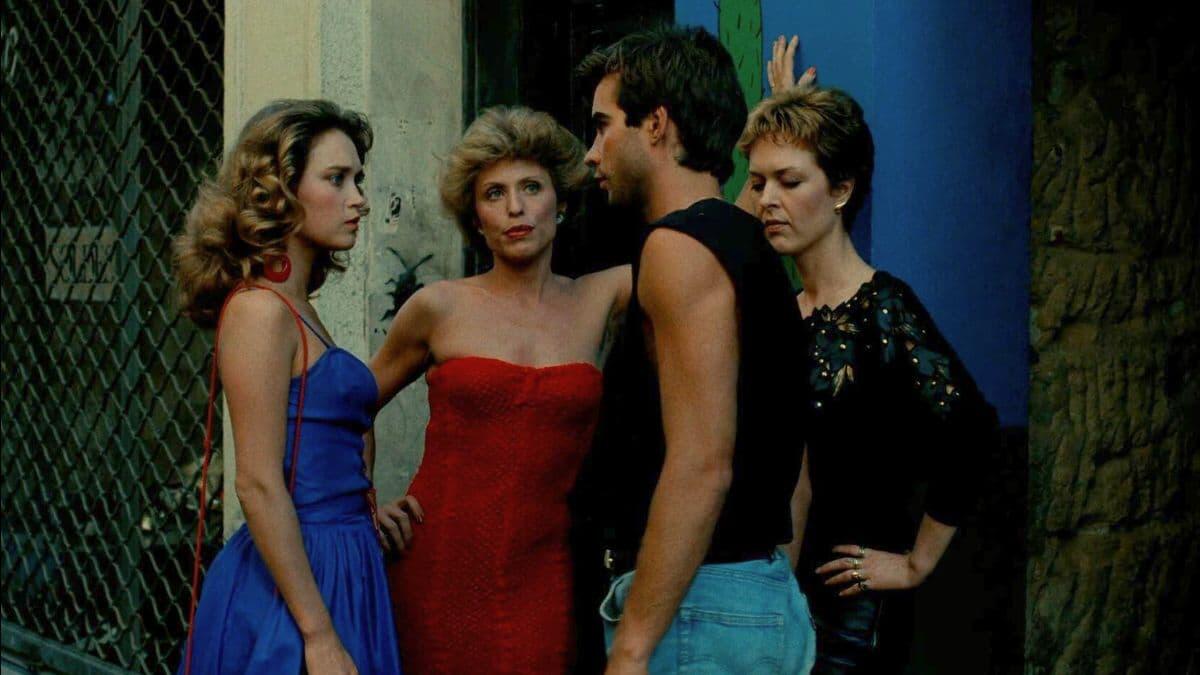
Marianne Basler, left, in “Rosa la rose, fille publique.”
(AGFA)
On Tuesday, Mezzanine will be putting on 2 shows of the local premiere of a new restoration of Paul Vecchiali’s 1986 “Rosa la rose, fille publique” at Brain Dead Studios.
The film is an intensely emotional melodrama about a Parisian prostitute, Rosa, just turning 20 years old and the most popular among the stable of women run by her pimp, as she grapples with what her future should be. Stylishly shot, the film is marked by a richness of character detail, with a deeply felt performance by Marianne Basler as Rosa, as the world around the Les Halles neighborhood feels particularly vibrant even with its undercurrents of intrigue and violence.
Vecchiali, who died in 2023 and besides directing such films as “The Strangler” and “Encore” also produced Chantal Akerman’s “Jeanne Dielman,” is among a number of French filmmakers currently undergoing a renewed interest in their work. Luc Moullet will see a tribute series at Lincoln Center in August, while Jacques Rozier currently has a program of his work available on the Criterion Channel. For as much attention as French cinema has gotten over the years, it is exciting to see that there are still new corners to be explored and fresh discoveries to be made.
‘Television Event’

A scene from the TV movie “The Day After.”
(ABC / Disney via Getty Images)
On Friday night the American Cinematheque at the Los Feliz 3 will host a screening of Jeff Daniels’ documentary “Television Event,” which takes a look at the end of the Cold War through the lens of the 1983 TV movie “The Day After,” which dramatized the aftermath of a nuclear weapons attack around Kansas City, Mo., and Lawrence, Kan., with a cast that included Jason Robards, JoBeth Williams, Steve Guttenberg and John Lithgow.
Nicholas Meyer, who directed “The Day After,” will be present for a Q&A on Friday moderated by his daughter, screenwriter Dylan Meyer. “Television Event” will also show on Saturday and Monday.
Seen by more than 100 million people when it first aired, the film was shocking for its depiction of the realities of a nuclear attack.
In a 2023 interview with Tim Grierson, Meyer said, “I realized that I didn’t want to make a ‘good’ movie. I didn’t want to make a good movie, because I knew that if I made a good movie, nobody would talk about the subject — they would only talk about the movie. I didn’t want a catchy theme song. I didn’t want brilliant cinematography, I didn’t want Emmy-nominated performances. All I wanted was to make a kind of public service announcement: If you have a nuclear war, this is what it might look like.”
‘Les vampires’
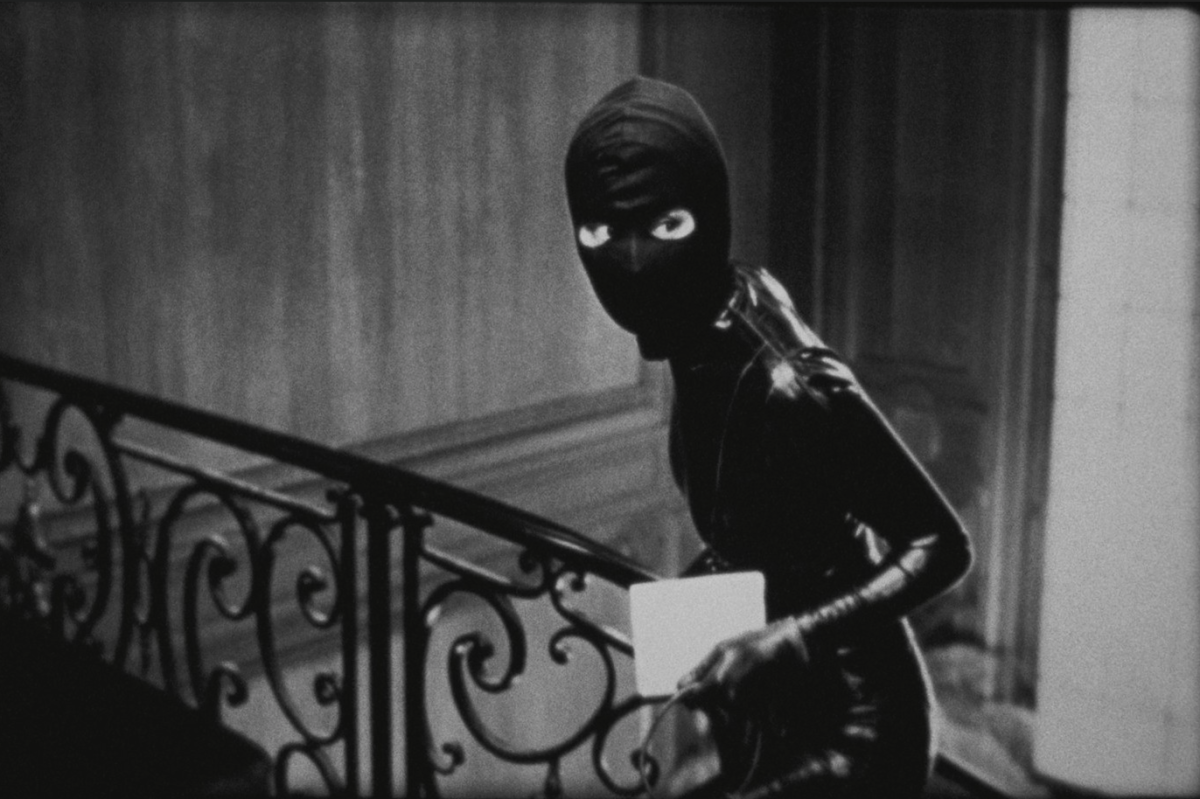
An image from Louis Feuillade’s ‘Les Vampires’
(Academy Museum)
On Sunday the Academy Museum will have a rare showing of Louis Feuillade’s 1915-16 complete 10-episode serial “Les vampires.” Set in the Parisian underworld, it follows a ruthless gang of criminals and the woman (played by the electrifying star Musidora) who infiltrates their ranks.
Modern audiences may also know “Les vampires” as part of the basis for Olivier Assayas’ 1996 film “Irma Vep” and his own 8-episode series adaptation of the film in 2022.
In other news
Free Indie Focus screening

Ana Sophia Heger, left, and Taron Egerton in “She Rides Shotgun.”
(Lionsgate)
This Tuesday we will have an Indie Focus Screening Series event with a free showing of “She Rides Shotgun” at the Culver Theater. Director Nick Rowland and stars Taron Egerton and Ana Sophia Heger will be there for a Q&A. You can RSVP here.
Adapted from the novel by Jordan Harper by screenwriters Ben Collins and Luke Piotrowski, the crime thriller involves a man (Egerton), newly released from prison, attempting to protect his daughter (Heger) from the violent gang who is now after them both.




